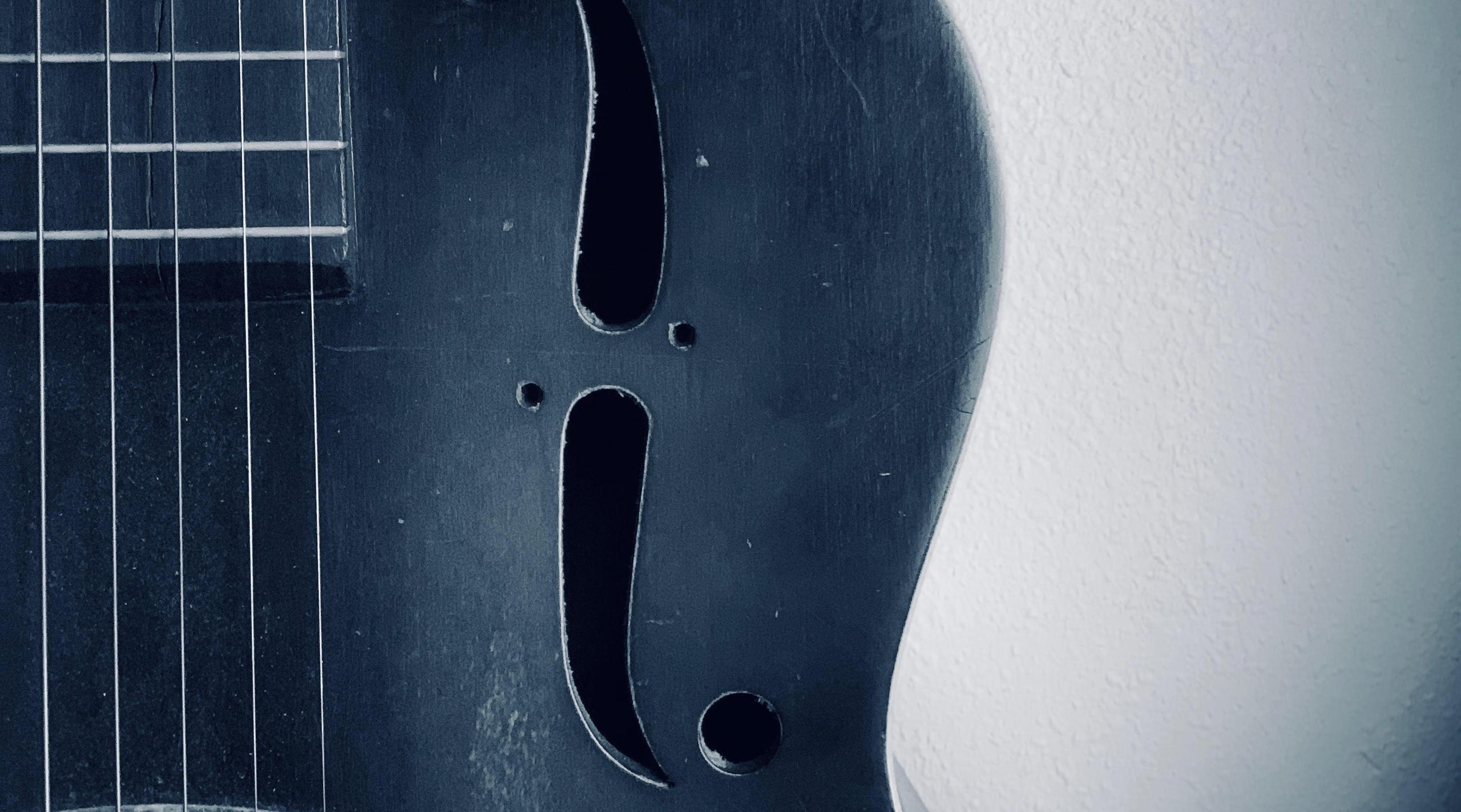Learn How to Add Swing and Jazz Sophistication To Your Steady Bass Blues
Add double stop licks, 6th and 9th chord voicings, swing-inspired turnarounds and jazz-blues chord substitutions to your vocabulary while learning six complete fingerstyle blues solos.
A short folk-revival digression
Once upon a time I opened a few shows for Dave Van Ronk. And while the highlight of the weekend was hearing Dave dish the dirt on the Greenwich Village folk scene over dinner, the next best thing was hearing him deliver one of his classic bits of schtick live from the stage:
“When I was a kid, I wanted to play jazz in the worst way – and I succeeded!”
The irony is, Van Ronk’s sophisticated blues arrangements on his classic 1976 album Sunday Street were a big part of what got me wondering early on, “how can I combine the hip, uptown chord voicings and turnarounds of the swing and jazz I love with the down-home grit and groove of fingerstyle blues?”
There were other examples scattered throughout the folk-revival catalogue. Stefan Grossman and John Renbourn’s instrumentals on records like Under The Volcano combined slick walking bass lines and sophisticated chord voicings with the snap of classic country blues, and Richard Saslow’s book The Art of Ragtime Guitar suggested how to approach various blues- and blues-related chord progressions with both alternating thumb and steady bass.
But blues being primarily a vocal art, instrumental examples seemed to be the exception, not the rule. I didn’t really find what I was looking for until I stumbled across a handful of solo piano recordings by Ray Bryant, James Booker and early Jellyroll Morton, all jazz musicians with deep blues sensibilities.


Tools For Blues Improvisation
I didn’t think I was really going to be able to recreate what those giants were doing at the keyboard. But it did make me long for a way to improvise at length, a means of developing chorus after chorus of solo fingerstyle blues while remaining interesting, colorful and funky. What I really wanted to do was take the sophisticated blues licks, voicings, chord substitutions and turnarounds from those blues-drenched jazz musicians and ground them in the downhome, solid groove of steady bass fingerstyle blues.
Like Van Ronk, I wouldn’t call myself a jazz musician. But over time, I worked out a vocabulary and an approach that let me play solo fingerstyle music that felt both bluesy and sophisticated, structured yet improvised. In my efforts to understand what makes the jazz version of the blues sound the way it does, I discovered ways to bring the voicings, chord substitutions and licks I liked back into my blues playing, without winding up sounding like a bossa nova guitarist doing “Autumn Leaves.” (Not that there’s anything wrong with either Brazilian music or the Great American Songbook.)
If that’s something you’d like to be able to do too, my course Fingerstyle Blues Vocabulary In E can show you the double stop and triplet-feel licks, up-the-neck 7th, 9th and 6th voicings, swing-inspired turnarounds and jazz-blues chord substitutions you need to improvise chorus after chorus of sophisticated yet downhome blues in E over a steady-bass groove.
What will you learn?
Each lesson comes in two parts. In the first part, you’ll learn the individual licks, voicings and other moves you need to build your vocabulary. In the second part, you’ll incorporate what you’ve just learned into a complete chorus of the blues. Not only does each full chorus show you how to put together the pieces of the current lesson, it also builds on what you’ve learned in previous lessons, so by the end, you understand how to mix, match, combine and recombine all the new ideas you’ve learned in as many ways as you can imagine.
Ready to get playing?
Fingerstyle Blues Vocabulary In E is available now for $37 and includes:
- Twelve in-depth lessons totaling over two hours of video instruction
- Line-by-line walkthroughs of every solo
- Clear, accurate downloadable PDFs with notation and tab for all six solos
- Downloadable videos for every lesson
- Unlimited streaming of every lesson
P.S. I love learning new stuff myself, but I do like to know what I’m getting into before I plunk my hard-earned shekels down. If that’s you too, take the time to watch the fourth solo lesson from the course, "More Chords." You can hear me play the solo up to tempo at the beginning, then watch me break the solo down line by line as I take you through all twelve bars in detail so you don't miss a single move.
If you’d like to add swing and jazz sophistication to your steady bass blues, my Fingerstyle Blues Vocabulary In E offers a practical, step-by-step approach to acquiring new licks, voicings, turnarounds and chord substitutions and incorporating all that vocabulary into complete choruses of the blues. Each lesson builds on the next, the accurate, uncluttered tab makes sure you can always see as well as hear what’s going on, and everything is downloadable, which means you can work at your own pace, from anywhere you like, for as long as you want. Behold! Click below, and all of this can be yours:

